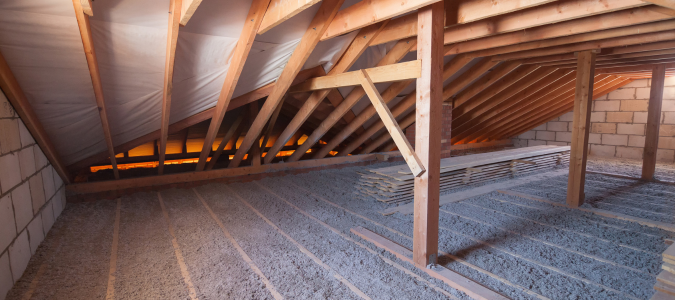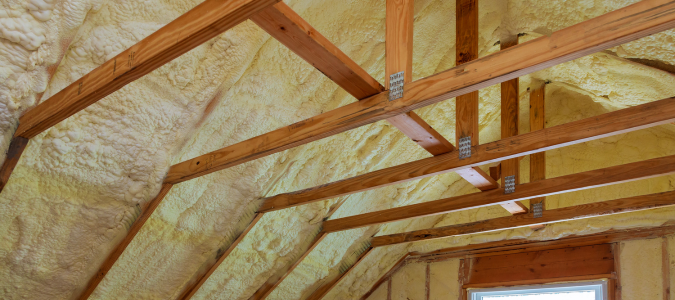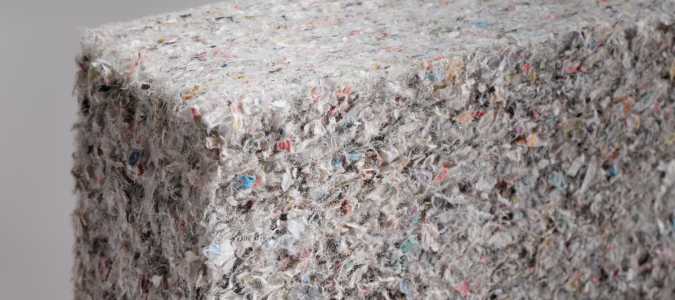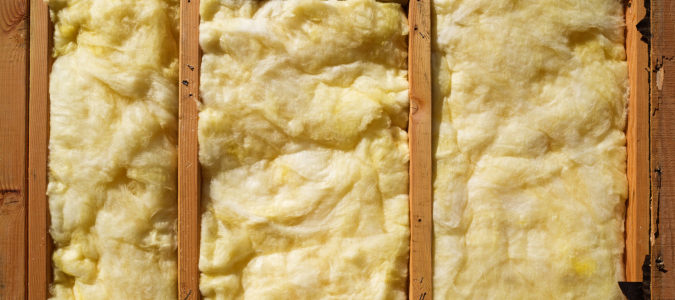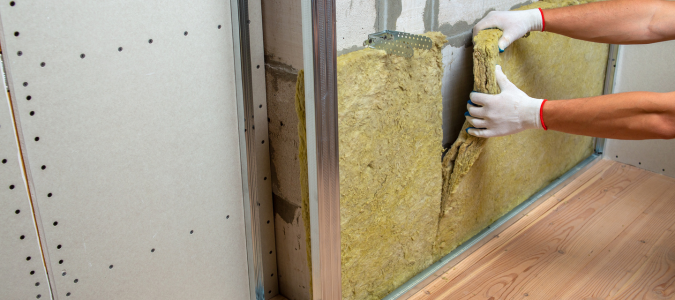Many homeowners don’t realize how essential insulation is to their homes. It keeps hot air from entering or leaving, ensuring the temperature inside stays consistent. With poor insulation, you never know when a draft is about to surprise you.
But insulation does more than keep you warm and toasty. Your wallet will thank you because it can help improve energy efficiency and lower utility bills. It can even control indoor moisture and help keep mildew at bay.
If you are just learning about insulation and R-values, here’s everything you need to know to select the best insulation for your home. You can also contact an insulation specialist for help.
What Is an Insulation R-Value and How Does It Work?
The R-value represents an insulation material’s resistance to heat flow per inch of thickness. The higher the R-value, the better the material is at insulating. R-values can be as low as R-10, typical of flooring materials. But it can also go up to R-60 for thick attic insulation.
If a particular material has a lower R-value, you can improve its insulation capabilities by using more of it. If an inch of a material has an R-value of R-30, you can use two inches of it to achieve an insulation of R-60. R-values can get tricky, so it’s best to call in a professional.
R-value requirements vary depending on your region, but most homeowners in the U.S. can live comfortably with lower R-values. If you’re in the south, the United States Department of Energy recommends R-13 to R-19 for floors and R-30 to R-60 for attics. Meanwhile, those in the north need R-25 to R-30 for floor insulation and R-49 to R-60 for attics.
If your home is under-insulated, a licensed professional can help. The insulation specialist will recommend the best insulation material based on your location and home size and install the correct thickness.
How to Improve the Insulation R-Value in Your Home
Are your monthly utility bills soaring through the roof? That’s probably your sign to improve your home’s insulation. Your attic, walls and flooring will be more resistant to heat flow, reducing cooling and heating costs.
These tips can help boost your home’s R-values.
Increase Attic Insulation
If you want to gauge the level of insulation in your home, the attic is the best place to start. Because attics are usually unfinished, the insulation is exposed and ready for inspection. You probably already have some insulation there, but if you can see through to the ceiling joists, chances are it’s not enough.
Fortunately, adding more insulation to your attic ceiling isn’t very hard for a professional. A pro can also add perpendicular batts to existing ones. If there are obstructions on the ceiling, a professional will use loose-fill insulation to cover the gaps.
Improve Wall Insulation
It’s hard to check the quality of existing wall insulation without drilling ugly holes in your home’s exterior. It’s best to ask for a professional’s help. An insulation specialist will inspect the insulation and identify areas on your wall that need more or don’t have any.
If your wall insulation needs beefing up, the insulation specialist will remove sections of your house siding and drill holes. Then, the stud bays will be filled with loose-fill materials. In addition, they can place insulated sheathing below the siding to increase your home’s R-value. That will prevent heat from escaping through the wall studs.
Insulate Overlooked Areas
Most homeowners focus on insulating their attics and exterior walls. But other areas in the home need just as much attention. Crawl spaces are one example of an overlooked surface. The traditional setup is to ventilate the crawl space to the outside and insulate the floor above. But the more modern approach is to seal off the crawl space and insulate the exterior walls. Consult an insulation specialist about the best method for your home.
Lastly, there are the rim joints. Many homeowners don’t realize they exist and need insulation. They’re the lateral support for flooring joists, preventing them from giving in under your home’s weight. A professional can insulate them by fitting insulation onto the floor joists and along the edges to seal them off.
How Thick Is R-30 Insulation?
Insulation with an R-value of 30 is a staple in residential and commercial buildings to boost energy efficiency and prevent heat transfer. It is commonly used in attics, floors and crawl spaces.
Since the higher the R-value, the better the insulation is at resisting heat transfer, R-30 insulation provides a high level of thermal resistance. Insulation thickness is commonly measured in inches, so the thicker the insulation, the better it will be able to resist heat transfer. The R-value of insulation can vary at the same thickness.
Insulation with an R-value of 30 can be made from materials like cellulose, mineral wool and fiberglass. Manufacturers bond them to create blankets and batts, allowing for seamless installation. As for thickness, insulation with a 30 R-value is usually nine and a half inches. But that depends on the material, installation method, available space and other factors.
R-30 insulation is a popular choice for a reason. Here are some of the benefits you can enjoy when you install this insulation thickness in your home.
Improved Energy Efficiency
Insulation with a 30 R-Value boasts high thermal resistance, meaning less heat escapes through walls, floors and the attic ceiling. Your heating and cooling systems won’t have to work any harder than they have to, resulting in lower utility bills. You’re also doing the environment a favor, as R-30 insulation can reduce your household’s greenhouse gas emissions.
Long-Term Savings
R-30 insulation can be more expensive than alternatives with lower R-values. But the money you’ll save in energy costs will eventually outweigh the amount you paid upfront. Also, R-30 insulation is an attractive feature to potential buyers. Equipping your home with this insulation thickness will help increase its resale value. You’ll earn more if you decide to sell down the line.
Increased Comfort
R-30 insulation can make your home more comfortable during extreme weather conditions. On unbearably hot days, it will protect you from the heat. When it’s freezing, it will stop the warm air from the heater from escaping.
R-30 insulation can also be an effective solution for noise pollution. It keeps outside noises from filtering in, so you can enjoy quiet and relaxing days at home.
If you are not sure whether R-30 is the best for your home, consult the experts. Insulation specialists will provide expert guidance on the insulation R-Value needed for your home based on location, home size and other factors. They will also install the insulation for you, ensuring its optimum performance.
Types of Blow-In Insulation and Their Benefits
Adding insulation batts to an existing home can be very difficult. You’d have to tear down drywalls to install them, which is messy, time-consuming and expensive. That’s where blow-in insulation can save the day. A long, flexible hose blows the insulating material into place, taking out the need to tear down drywalls.
If you’re considering blow-in insulation for your home, here are the three most common types.
Cellulose
Cellulose, pictured above, is made from shredded recycled newspaper or cardboard. It is sustainable and chemically treated to be mold and fire-resistant. Cellulose is also an option for those dealing with creepy crawlies at home. There’s a cellulose-based product called TAP® Pest Control Insulation that’s resistant not only to heat flow but also to ants, roaches and other bugs.
However, one downside to cellulose is that it should not get wet. If cellulose gets wet because of a leaky pipe or roof, it will become soggy and lose its volume. That will lower its R-value and overall effectiveness.
Fiberglass
Fiberglass batts and rolls are popular insulation products for homes, but there’s a blow-in version, too. Manufacturers will heat the glass until it melts and spin it into wispy fibers. It can get into hard-to-reach areas on your attic ceiling and exterior walls.
However, blow-in fiberglass requires careful installation. Another downside is that it tends to retain moisture and can lose its thermal effectiveness over time.
Rock Wool
Rock or mineral wool is made from blast furnace slag, a by-product of iron ore extraction. Manufacturers heat the slag, mix it with other materials and spin it until it’s fluffy. The result is insulation that looks like raw sheep’s wool.
It has excellent fire-resisting properties, so it’s ideal for spots in your home under the fire code. These include the wall between your house and the garage and the floor between the garage and the room above it. However, the disadvantage of rock wool is its price. Because it’s rarer, it’s significantly more expensive than fiberglass.
Consult an Expert for Your Home Insulation Issues
Insulation can be tricky, leaving many homeowners scratching their heads. It’s far easier to let a professional take over. With the help of an insulation specialist, you’ll have the best insulation for your home. They can also help you decide whether spray foam insulation or fiberglass would be better for your home.
ABC Can Help You Save on Your Electric Bill
Everyone wants to save money on their heating and cooling costs and make their homes more energy-efficient. If you want to make your home more energy-efficient, contact ABC Home & Commercial Services. Our HVAC experts help you understand the different types of insulation, remove your old insulation and install new insulation for you.
